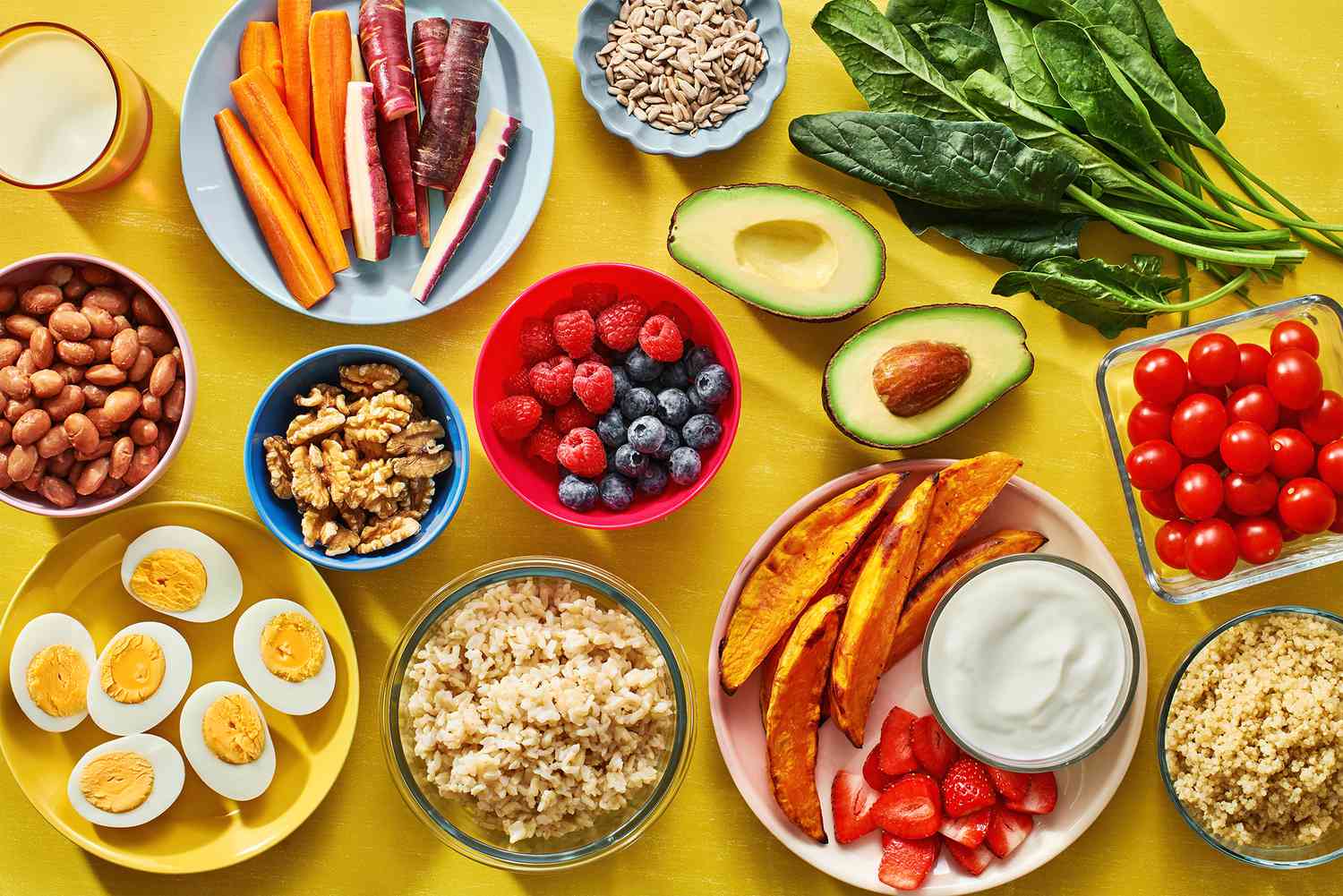TIPS TO STRETCH YOUR FOOD BUDGET: Start by shopping with a plan and skipping those impulse buys!
Eating well on a budget may seem like a challenge, but with some planning and strategy, it’s possible to save money without compromising the quality or quantity of your meals. Whether you’re trying to save for a big goal or need to make your grocery money last, there are numerous strategies you can use to keep costs down without sacrificing the quality of your meals.
From planning meals to making smart choices at the grocery store, these tips to stretch your food budget will help you save money and make mealtime more manageable, healthier, and enjoyable.
9 TIPS TO STRETCH YOUR FOOD BUDGET
1. Plan Your Meals Ahead of Time
Meal planning is one of the most powerful tools in managing your food budget. It may seem like an extra task, but taking just a bit of time each week to plan your meals can save you a lot of money in the long run. When you plan, you’re more likely to buy only the items you need, which reduces impulse purchases and prevents food waste. You can buy in bulk and use leftovers effectively by choosing recipes with similar ingredients. For example, making a large soup can become several weekly meals, cutting down on cooking time and cost. In addition, having a clear plan helps you avoid the temptation of ordering takeout or grabbing convenience foods when you’re too busy to cook.
2. Stick to a Shopping List
Once you’ve planned your meals, create a shopping list based on those meals and stick to it. It’s easy to be swayed by enticing sale signs or the lure of random snacks while shopping, but these unplanned purchases add up quickly. Sticking to your list is one of the most effective ways to avoid overspending. By planning your meals and sticking to your list, you’ll avoid buying items that aren’t necessary, which can easily blow your food budget. To further reduce the chance of distractions, try to shop when you're not hungry, as it helps minimise impulse buys. If possible, organize your list by the store layout to make your shopping trip more efficient and keep you focused on your goal.
3. Buy in Bulk
Buying in bulk is an excellent strategy for cutting down the cost of essential pantry staples. Items like grains, pasta, rice, dried beans, and canned goods are significantly cheaper when bought in larger quantities. While the initial cost may seem higher, buying in bulk often reduces the overall cost per unit, making it a wise investment in the long run. Just be mindful of your storage space, and avoid purchasing more than you can realistically use. Buying in bulk works exceptionally well for non-perishable items you can store for months, but it can also apply to frozen foods like vegetables and meat. This allows you to take advantage of sales on items you’ll use regularly, reducing store trips.
4. Cook from Scratch
While it may seem convenient to buy pre-packaged meals, cooking from scratch is often much more affordable and healthier. Fast food and frozen meals often come with a significant markup. When you prepare meals at home, you control the ingredients and the portion sizes. Simple meals like pasta with a homemade tomato sauce, soups, or stir-fries are often budget-friendly and don’t require expensive ingredients. Bulk ingredients like pasta, rice, or beans can be stretched across several meals, even when cooking for a family or a group. Plus, cooking from scratch can be fun and rewarding, allowing you to experiment with flavors and ingredients while saving money.
Read Also: How To Save Money On Food
5. Repurpose Leftovers
Leftovers are an often-overlooked opportunity to stretch your food budget. Instead of tossing out excess food, consider turning it into another meal. A leftover roast chicken can become chicken salad, tacos, or a casserole. Similarly, leftover vegetables can be incorporated into soups, stir-fries, or omelets. This reduces food waste and saves you time and energy, as you don’t have to cook an entirely new meal from scratch. If you’re not sure how to use up your leftovers, make a habit of using them as the foundation for the next meal. This practice helps ensure that nothing goes to waste and that you always make the most of what you already have in your fridge.
6. Shop for Seasonal Produce
Produce prices fluctuate throughout the year, and one of the most effective ways to save on fresh fruits and vegetables is to buy them when they’re in season. Seasonal produce is typically more abundant, which drives the prices down. For example, strawberries are usually cheaper in late spring and early summer, while winter squash and apples are more affordable in the fall. This is more cost-effective, and seasonal produce is often fresher and tastier. If you find a great deal on seasonal fruits or vegetables, consider freezing them for later use. You can also look for sales on items like tomatoes and berries, which can be canned or frozen to enjoy throughout the year.
7. Take Advantage of Sales, Coupons, and Discounts
Keeping an eye on sales, discounts, and coupons is another great way to lower your grocery bill. Many stores offer weekly or monthly promotions on staple items, and you can save significantly by purchasing them during these sales. In addition, coupons can provide substantial savings on name-brand and store-brand items, whether online or in newspapers. Signing up for store loyalty programs often grants access to exclusive discounts, and some stores will even offer loyalty members personalized coupons based on past purchases. When using coupons, however, save money on items you would have bought anyway. It’s easy to fall into the trap of buying something just because it’s discounted, but unnecessary purchases can negate savings.
8. Grow Your Own Herbs and Vegetables
Growing your own food is a fantastic way to save on grocery costs while enjoying fresh, nutritious ingredients. Even if you don’t have a yard, you can grow herbs like basil, cilantro, and parsley in small pots on a windowsill. These herbs are often expensive at the store, and growing them yourself ensures you always have fresh ingredients. If you have access to a small garden, consider planting vegetables like tomatoes, cucumbers, or lettuce, which can yield a lot of produce for relatively little investment. The cost savings come from the reduced need to buy fresh herbs or vegetables and the joy and satisfaction of growing your food.
9. Choose Store Brands Over Name Brands
One simplest and most effective way to save money on groceries is to choose store brands over name-brand products. Store brands are often made by the same manufacturers as the name-brand items but are sold at a fraction of the price. Whether it’s canned goods, dairy, or pantry staples, store brands are typically just as good in quality and taste. You can save significantly each month by switching to store brands for regular purchases. And while it might take a little trial and error to find your favorite store-brand products, many people find they’re just as satisfied with the cheaper alternatives.
Conclusion
9 TIPS TO STRETCH YOUR FOOD BUDGET: Stretching your food budget doesn’t mean compromising on the quality of your meals. By following these nine tips—meal planning, sticking to a shopping list, buying in bulk, cooking from scratch, repurposing leftovers, shopping seasonally, taking advantage of discounts, growing your food, and opting for store brands—you can reduce your grocery spending without sacrificing your health or enjoyment. With creativity and effort, you can feed yourself and your family delicious, nutritious meals while keeping your budget intact. Ultimately, it’s all about being intentional with your purchases, using what you already have, and making the most of every penny you spend.


















Responses (0 )